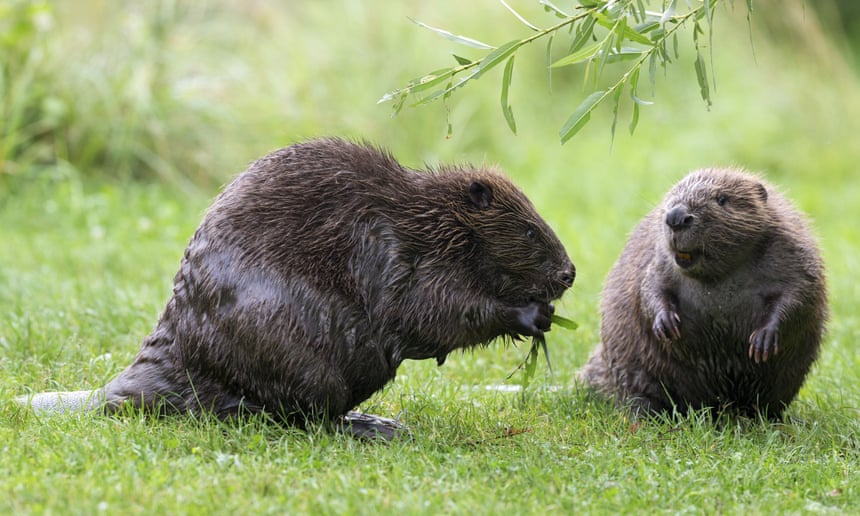Well this was a surprise to come across. I have been so buried in festival details I forgot international beaver day is fast approaching!
Belching Beaver Donates $10K To Wildlife 2000 Through Give A Dam Campaign
 Did you know National Beer Day and International Beaver day are on the same day? April 7 hosts both of these holidays, and Belching Beaver is celebrating by teaming up with Wildlife 2000 to drive awareness, through it’s Give A Dam campaign, of how beavers help create biodiversity and other positive ecological benefits.
Did you know National Beer Day and International Beaver day are on the same day? April 7 hosts both of these holidays, and Belching Beaver is celebrating by teaming up with Wildlife 2000 to drive awareness, through it’s Give A Dam campaign, of how beavers help create biodiversity and other positive ecological benefits.
“The state of California has antiquated laws,” said Eric Robinson of Wildlife 2000. “They don’t allow anyone to move beaver anywhere in the state without a permit, and the permits are not given to anyone, they have lots of reasons not to move beaver.” “You can kill them, about 2,000 per year, mostly in Northern California.” “There are plenty of permits given to lethally remove them, but not for humanely putting them back in the land where they can do some good.”
Belching Beaver’s donation to Wildlife 2000 will fund efforts to try and get these laws updated and changed.
Wildlife 2000 is the advocacy group run by Sherri Tippie. So of course when I saw this I called her right away. She sounded very cheerful and excited about the whole thing. And she says hi to everyone, of course.
 “To be honest, I’ve never seen a beaver, and I’ve lived in California my whole life, but now I know why, they are being killed,” said Haley Smith Marketing Manager at Belching Beaver Brewery. “I’ve always been a lover of animals, and I understand that some can see beavers as a nuisance, but I don’t think they should just be killed.” “This is their home, and they are just doing what they know to do, build dams, and raise their kits.”
“To be honest, I’ve never seen a beaver, and I’ve lived in California my whole life, but now I know why, they are being killed,” said Haley Smith Marketing Manager at Belching Beaver Brewery. “I’ve always been a lover of animals, and I understand that some can see beavers as a nuisance, but I don’t think they should just be killed.” “This is their home, and they are just doing what they know to do, build dams, and raise their kits.”
The brewery is working with their distributor partners to create displays in retail locations to try and drive awareness about these animals. The displays will consist of marketing pieces that give facts about beavers and host a QR code that can be scanned to learn more about Wildlife 2000 and their partnership.
A special release beer was also created, Operation Beaver Drop Lemon Wheat Ale, to shine light on a successful beaver relocation project that took place in Idaho. Beavers were put into aerated boxes and parachuted down to a new environment, instead of the alternative of being trapped lethally.
Wow, Eric Robinson is the point person that made this happen, and he is a FORCE of nature for beavers. He has been hard on the beaver relocation rule change for years now. and doesn’t seem to be getting weary.
 Operation Beaver Drop is a light and refreshing wheat ale brewed with lemon peel, lemongrass and grains of paradise. It will be available throughout the brewery’s distribution footprint in 4-pack 16 oz cans starting April 1.
Operation Beaver Drop is a light and refreshing wheat ale brewed with lemon peel, lemongrass and grains of paradise. It will be available throughout the brewery’s distribution footprint in 4-pack 16 oz cans starting April 1.
Belching Beaver is also hosting a special Pint Night at their Oceanside location on April 7. Wildlife 2000 will be there to talk more about their mission and how, and why we should protect beavers. There will be a video as well as special giveaways.
Well well well, They use our name but they aren’t giving us any money. Hmm. I suppose raising awareness of the importance of beavers is good new, even if they don’t contribute to the beaver festival. And I’m always happy to have a reason to call Sherri and here her happy and taking on the world. So that’s a plus plus plus!
Oh I saw our ad in the new issue of Bay Nature yesterday. It’s on the second page right hand corner top, right where you open to.






 Beavers could be put to work building dams to stop a village from flooding in the
Beavers could be put to work building dams to stop a village from flooding in the  National beaver expert Derek Gow will be in Cheshire to give a talk on the how the animal’s re-introduction could impact the countryside. Cheshire Wildlife Trust is hosting the one-off talk at its headquarters at Bickley Hall Farm, between Malpas and Nantwich.
National beaver expert Derek Gow will be in Cheshire to give a talk on the how the animal’s re-introduction could impact the countryside. Cheshire Wildlife Trust is hosting the one-off talk at its headquarters at Bickley Hall Farm, between Malpas and Nantwich.
 Yesterday I was asked by Michael Howie of
Yesterday I was asked by Michael Howie of 



































